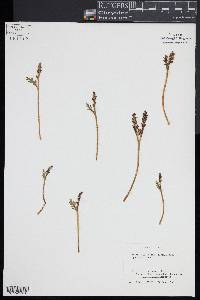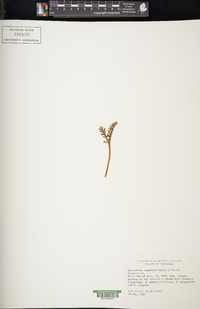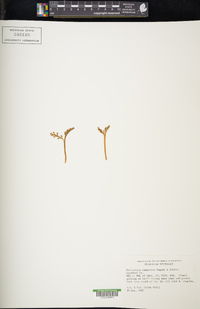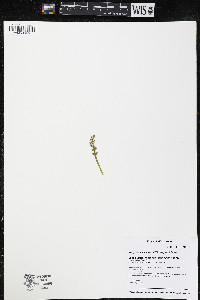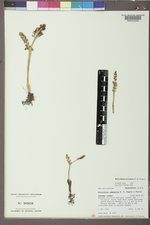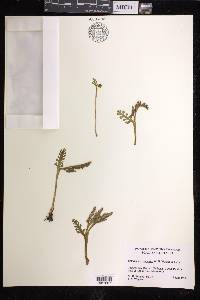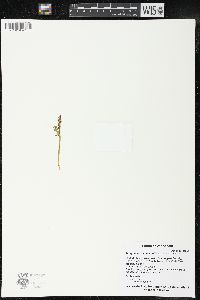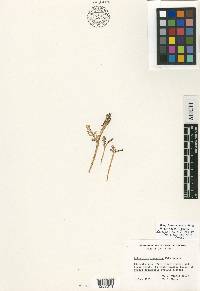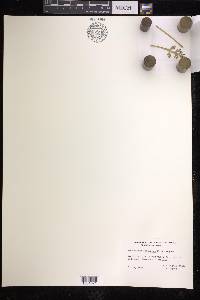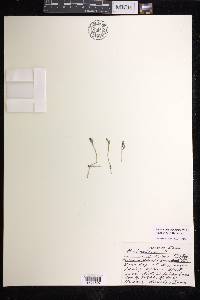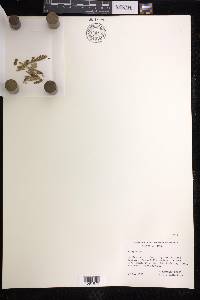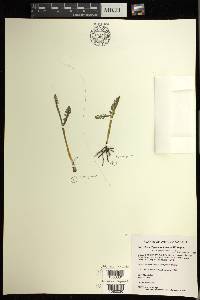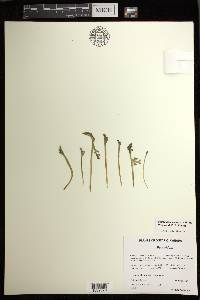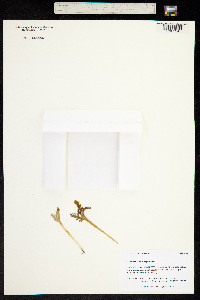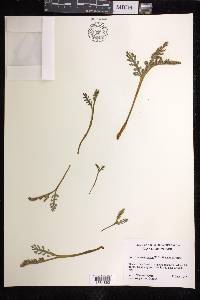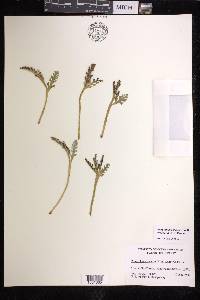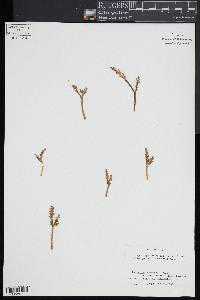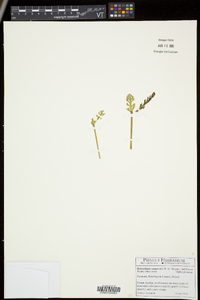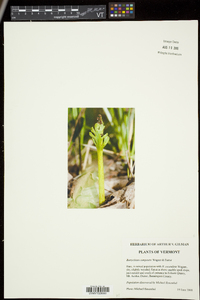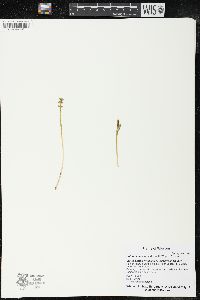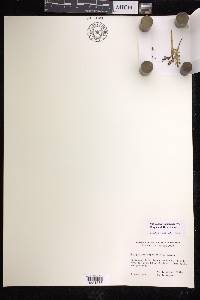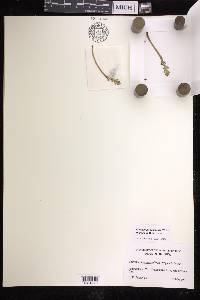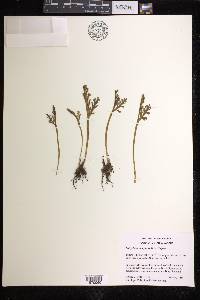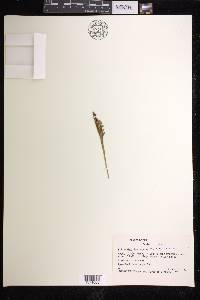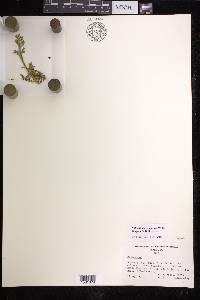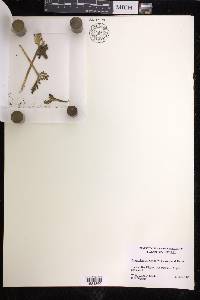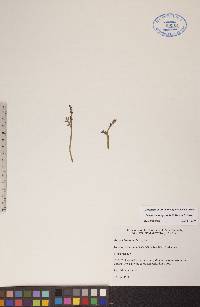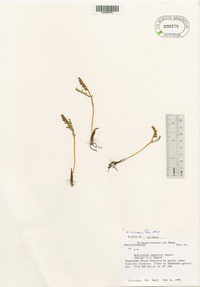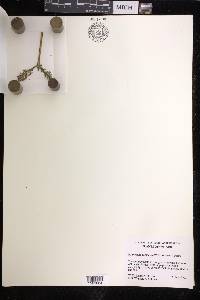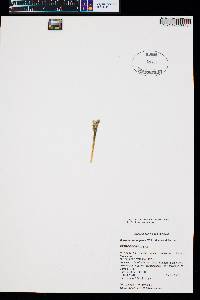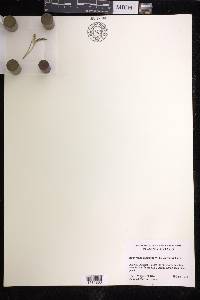Botrychium campestre
|
|
|
|
Family: Ophioglossaceae
Iowa Moonwort
|
Trophophore stalk usually absent but sometimes broadly tapered to 10 mm in forms with coalesced proximal pinnae; blade glaucescent, oblong, longitudinally folded when alive, 1-pinnate, to 4 × 1.3 cm, very fleshy. Pinnae to 5(--9) pairs, spreading, usually remote, separated 1--3 times pinna width, in some populations irregularly and extensively fused with considerable webbing along rachis, distance between 1st and 2d pinnae not or slightly more than between 2d and 3d pairs, basal pinna pair approximately equal in size and cutting to the adjacent pair, mostly linear to linear-spatulate, undivided to tip, margins crenulate to dentate, usually notched or cleft into 2 or several segments, apex rounded to acute, venation like ribs of fan, midrib absent. Sporophores 1(--2, rarely)-pinnate, 1--1.5 times length of trophophore. 2 n =90. Leaves appearing in early spring and dying in late spring and early summer, long before those of associated moonworts. Extremely inconspicuous in prairies, dunes, grassy railroad sidings, and fields over limestone; of conservation concern; 50--1200 m; Alta., Ont., Sask.; Colo., Iowa, Mich., Minn., Mont., Nebr., N.Y., N.Dak., S.Dak., Wis., Wyo. Botrychium campestre is one of four moonwort species that commonly produce dense clusters of minute, spheric gemmae at the root bases. Peculiar forms of B . campestre with coalescent pinnae are found on dunes in the vicinity of Lake Michigan.
Perennial fern 3 - 10 cm tall Stem: single, upright, very short and inconspicuous, up to 5 mm in diameter with a thickened base (caudex). Spores: thousands per sac, all of one kind, three-sectioned (trilete), thick-walled, and with a bumpy or pimply surface. The spores give rise to the gametophyte (the sexual phase of the plant), which is broadly egg-shaped, unbranched, tiny (1 - 3 mm tall, 1 - 10 mm diameter), fleshy, not green, underground, saprophytic, and inhabited by symbiotic fungi (mycorrhizae). Leaf: one per stem, on long stalk arising from an expanded, clasping base, which forms a closed sheath around stem apex. The single leaf is made up of two parts arising from a shared stalk: a sterile, green, expanded blade portion (trophophore); and a fertile, stalk-like, spore-bearing portion (sporophore). Leaves appear in early spring and die in late spring and early summer. Roots: up to ten per plant, yellow or brown, 0.5 -1.5 mm in diameter, and originating 1 cm below the base of the plant. Similar species: In the Chicago Region, Botrychium campestre is probably most similar to B. simplex, but the sterile blade (trophophore) of that species is usually larger and more obvious, rather thin and almost papery, never folded lengthwise when alive, and the pinnae are more rounded or fan-shaped. Also similar is B. matricariifolium, but that species has non-folded trophophores with more lance-shaped final pinnae divisions, which have pinnate venation. All of our other species have trophophore blades that are widely triangular, wider than long, and pinnately compound multiple times. Habitat and ecology: Incredibly rare, found only once in the Chicago Region in an abandoned gravel pit. Occurence in the Chicago region: native Notes: This species is closely related to three more northern species: B. pallidum, B. lunaria, and B. minganense. Some floras lump all four species together. Interested individuals are recommended to see the Flora of North America (1993) for accurate information. Botrychium campestre commonly produces dense clusters of minute, spherical, vegetative, asexual buds (gemmae) at the bases of the roots, which detach from the parent plant to form new plants. Author: The Field Museum |


